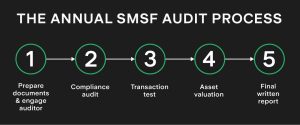Understanding the Importance of SMSF Audit for Compliance
Introduction to SMSF Audit
In the realm of financial management, Self-Managed Superannuation Funds (SMSFs) have gained considerable popularity due to the level of control and flexibility they offer to members. However, with this autonomy comes the responsibility to ensure compliance with regulatory standards. One crucial aspect of compliance is the SMSF audit, which plays a pivotal role in verifying the accuracy and legality of fund operations.
The Role of SMSF Audit
1. Compliance Verification
The primary purpose of an SMSF audit is to assess the fund’s compliance with the rules and regulations set forth by the Australian Taxation Office (ATO). This includes ensuring that contributions, investments, and distributions are in line with the Superannuation Industry (Supervision) Act 1993 (SISA) and other relevant legislation.

2. Identification of Errors and Irregularities
Through a comprehensive review of financial records and transactions, an SMSF audit helps in identifying any errors, discrepancies, or irregularities in the fund’s operations. This proactive approach allows trustees to rectify issues before they escalate into serious compliance breaches.
3. Protection of Member Interests
Conducting regular audits safeguards the interests of SMSF members by providing assurance that their retirement savings are being managed prudently and in accordance with legal requirements. It enhances transparency and trust between trustees and beneficiaries, fostering a positive relationship within the fund.
Ensuring Effective SMSF Audits
1. Engagement of Qualified Auditors
Selecting a competent and experienced auditor is paramount to ensuring a thorough and effective SMSF audit. Auditors should possess the necessary expertise in superannuation laws and regulations, as well as a keen eye for detail to identify potential compliance issues.
2. Adherence to Regulatory Standards
Auditors must adhere to the auditing standards and guidelines established by the Auditing and Assurance Standards Board (AUASB) and the ATO. Compliance with these standards ensures the integrity and credibility of the audit process, providing assurance to stakeholders and regulatory authorities. https://smsfauditshop.com.au/
3. Documentation and Record-keeping
Maintaining accurate and comprehensive documentation is essential for demonstrating compliance during an SMSF audit. Trustees should keep records of financial transactions, investment decisions, and meeting minutes to facilitate the audit process and ensure transparency.
Conclusion
In conclusion, SMSF audit plays a vital role in ensuring compliance with regulatory requirements and safeguarding the interests of members. By conducting regular audits and adhering to best practices, trustees can mitigate risks, identify areas for improvement, and uphold the integrity of their self-managed superannuation funds. Embracing a proactive approach to compliance not only enhances the financial well-being of SMSF members but also fosters trust and confidence in the superannuation system as a whole.

By adhering to these principles and guidelines, trustees can navigate the complexities of SMSF management with confidence and ensure a secure financial future for themselves and their beneficiaries.
Remember, when it comes to SMSF audit, compliance is key. Stay informed, stay compliant, and secure your financial future with confidence.


